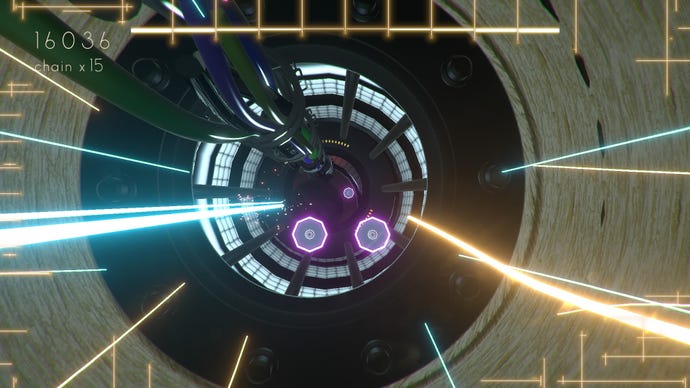Laserlife PS4 Review: Psychedelia
From the makers of the Bit.Trip series comes this pulsating rhythm game.
This article first appeared on USgamer, a partner publication of VG247. Some content, such as this article, has been migrated to VG247 for posterity after USgamer's closure - but it has not been edited or further vetted by the VG247 team.
The lifeless body of an astronaut drifts in space. It's surrounded by some kind of alien machine that seems to be examining it. That doesn't exactly sound like a typical opening to a rhythm game, but welcome to Laserlife, the latest release from Choice Provisions, formerly Gaijin Games, developers of the Bit.Trip series.
The objective of this heady release is to play the role of the alien machine – or perhaps the intelligence that controls it. Its mission – to use "technology far beyond human comprehension to build physical replicas of the astronaut’s long-dead memories in hopes to understand what this strange creature was and why it is floating through space alone."
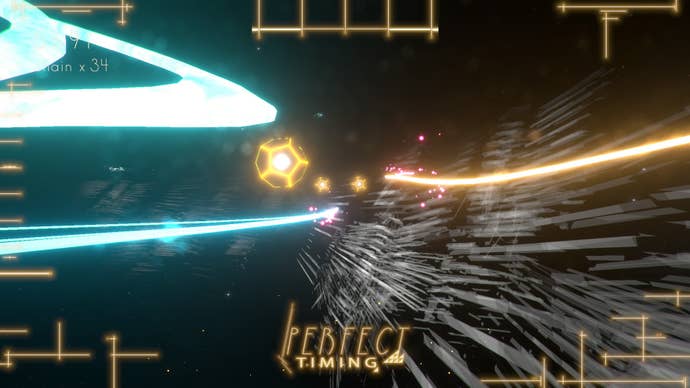
What this high concept boils down to is a twin-stick rhythm game that plays a little like a 3D rail shooter. The player flies two neon charges down an ever-changing psychedelic tunnel using both joypads, attempting to crash into memory molecules and capture them by pressing either trigger on the back of the D-Pad – which, if you get it right, happens in perfect sync with the game's soundtrack. This essentially represents the first section of each three-part level.
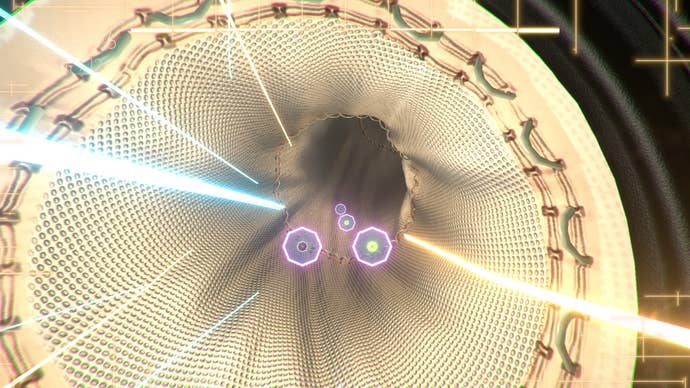
The action then moves to a second wave in which the player continues to fly the charges down the tunnel and attempts to hit more molecules, only this time you don't need to capture them – just run into them by ensuring your charge is positioned correctly on the screen. The point of this particular exercise is to harmonize the Astronaut's memories – whatever that might mean.
The third section of a level mixes things up by presenting objects that block your way, which you have to safely navigate past by guiding your charges through the small gaps in them. Doing so successfully ends the level, and energizes the astronaut's dead body, creating manifestations of his memories that ultimately come together to build a story of the key memories of his life, and what happened to him on his mission. This plays out over twelve levels in all, which are broken out into three tiers of four.
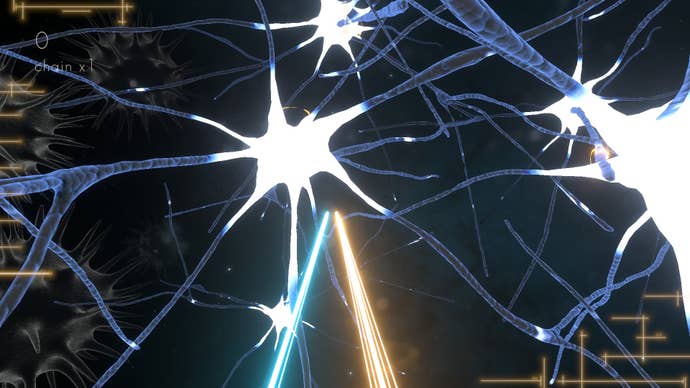
While you're flying the charges down the tunnel, you're treated to a series of images, representing memories, the inside of a brain, and other weird and wonderful abstractions. It plays like some kind of tripped-out music video, and while it's certainly out there, it does look absolutely stunning.
What'll make or break the game for you, however, is its soundtrack. Composed by Chris Osborn, who writes music under the name of TRACER, for me it was the former. A mix of what sounds like updated late 90's/early 00's progressive and tech house, I absolutely loved its cosmic, melancholic, mid-tempo electronic beats. You can hear a couple of tracks here, which will give you a good idea what kind of music Laserlife features. If you like it, you'll be pleased to know that there are plenty more killer tunes like these in the game. If this music is not for you, however, I'd suggest you can pretty much stop reading here and move on: this game will leave you cold if the soundtrack doesn't work for you.
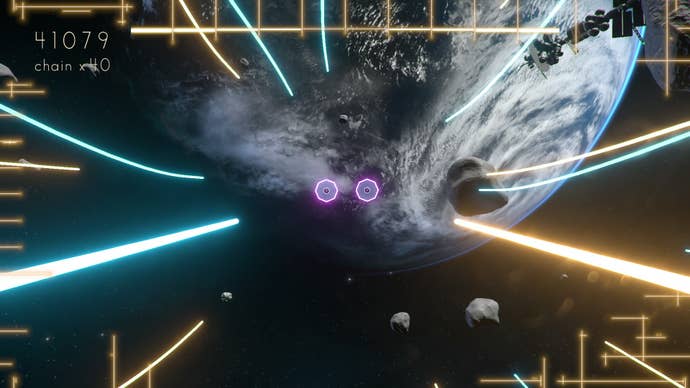
On the gameplay side of things, Laserlife is quite challenging – particularly on higher difficulty levels where each charge has to follow its own path. Controlling them both simultaneously sometimes feels like trying to rub your stomach and pat your head at the same time, but I'll say this: practice really does make perfect. If it all proves a little too much, you can always dial the difficulty down to easy, and pretty much fly through the game without any problems at all. The lowest difficulty level is a walk in the park compared to the two harder settings, which require you to perform spectacular loops and maneuvers that make your eyes feel like they're moving in two different directions. Probably because they are.
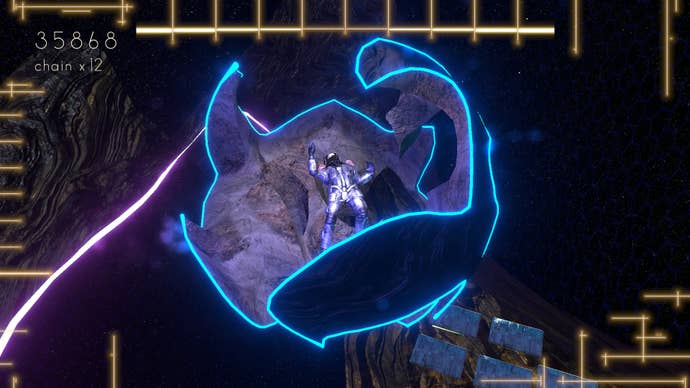
Laserlife takes an hour or two to play through, depending on the difficulty setting you choose, and during that time you're given a real treat for the eyes and ears. Is it worth going back to after playing through it? That depends. There are leaderboards for each level, so if you're competitive, that's a good reason to replay them. And if like me you really enjoy the experience of playing the game, then you'll doubtless go back to it a few more times. But ultimately, it's a game you'll probably play through in one sitting, and then return to every now and then - when you’re in the mood for something that helps you relax and zone out.
It's tough to judge Laserlife, because I think it's very much a personal piece of software. If you love deep, rhythmic progressive and tech house music, and grew up watching late-night abstract electronica music videos, you'll very likely really enjoy playing this psychedelic game. For those who like their gaming experiences a little less experimental and a little more visceral, you probably won't have much fun here.
All I'll say is that I really enjoyed Laserlife, and while its experience is a little on the brief side, I do see myself going back to it every now and again, if only to enjoy its audio-visuals, and to give my coordination a good workout.
Lasting AppealThe game can be finished in one sitting, making it a short, but sweet experience. Leaderboards help extend its long-term appeal somewhat, but not by much.
SoundSome great progressive/tech house tunes provide the perfect soundtrack to the trippy visuals.
VisualsLaserlife's psychedelic visuals play out like an abstract music video - and look great.
ConclusionAn entertaining, challenging, and thoroughly psychedelic music rhythm game that has great audio-visuals. It's a little on the short side at only a couple of hours, but it's a fun game nevertheless.
